Mooney M20E Model
Production Time 9 to 10 weeks
Shipment is by FedEx, UPS or DHL International Express Courier with a normal door-to-door delivery time worldwide of within 2-3 business days after dispatch. Due to the current volatility of world fuel prices, the amount mentioned here is our best estimate for DHL and UPS and may be subject to change at the time of shipping.

Porduct Statistics
Length: 12.5 Inches (31.8 Centimeters)Wingspan: 17 Inches (43.2 Centimeters)
Height: 3.9 Inches (9.9 Centimeters)
Scale: 1:26
$239.50
Manufacturer: Mooney
Production Time 9 to 10 weeks
-
United States dollar ($)
-
Pound sterling (£)
-
Euro (€)
-
Australian dollar ($)
-
Canadian dollar ($)
-
Singapore dollar ($)
-
Swiss franc (CHF)
-
Japanese yen (¥)
-
Danish krone (kr.)
-
Hong Kong dollar ($)
-
Norwegian krone (kr)
-
Swedish krona (kr)
General Product Description
Our MyMahoganyModel Mooney M20E Model exhibits unique, unrivaled quality and detailed design to come as close as possible to the accuracy of the actual plane. It comes as standard with a robust, durable base or stand which is available in a variety of different finishes designed to match your own personal requirements including solid wood, wood with polished metal supports or adjustable wood wall mount and will be ready within about 9-10 weeks from placement of order.
The Mooney M20E Model is made of the finest kiln dried renewable mahogany wood (commonly known as Lauan or Meranti) which has undergone many stages of carving and meticulous and careful sanding giving the beautiful finished museum quality masterpiece. Many collectors and model connoisseurs demonstrate their preference for genuine handmade and hand painted mahogany wood models rather than plastic or die cast (diecast) alternatives due to the overall look and totally different feel of the item - we trust you will find the same. We can, however, if required produce the same model in Solid Cast Resin so just click and contact us us for further information. Our craftsmen and gifted artisans ensure that our finely handcrafted model airplanes match the precise blueprint details of the original aircraft. The paint scheme, markings and parts are closely matched, reflecting the original aircraft. This stylish top-quality desktop replica model will surely enthrall anyone who receives this as a gift and for sure one of the most appropriate and desirably collectable gifts for any aviation enthusiast and avid aircraft collector whilst also displaying a perfect resemblance to the actual aircraft.
If you require we can also make the Mooney M20E Model in any other airline, private livery or colour scheme you require and if necessary in a different size or scale. Just click here to contact us with a description or photographs of what you require, and we will let you have a quotation for the necessary customization by return email. We can also make bespoke scale replicas of any other private / civil commercial airliner or airliners, helicopter, glider, gliders with engines, military jet, warplane jets, propeller warplanes, biplane, triplane, tail fin, spacecraft, rocket or NASA model you require in any airline, military or civilian livery or colors. We also produce model airships, blimp, dirigible, blimps, boat and ship collectibles. Wall plaque or seal for military, government or private customers. Again, by clicking here to contact us just let us know exactly what you need.
Mooney has changed ownership several times over the years. It even became a French owned company for a while. The design of the M20 is one of the most outstanding aviation achievements. The tail is to say the least unusual. However, it remains in the airflow at extreme attitudes and does not slow the thing down at all. What is even more unusual is that the entire tail hinges to enable trim changes. Unlike most modern aircraft, the fuselage has a moly steel space frame around the passenger compartment and this give vastly improved occupant survivability in the unfortunate event of an accident. Many feel that the cockpit is cramped. This is an optical illusion, as the internal dimensions are very similar to a Bonanza. Control harmony takes an hour to get used to, and after that, most pilots fall in love. After closing the doors a short time ago, Mooney is back again making these fine airplanes and the business seems to be going from strength to strength. The aircraft is a perfect long distance cruiser and is not all that bad air racing either! If all of this seems a tad biased, perhaps it is.
First Mk20
The first M20 was built in 1955 and was Al Mooney’;s twentieth aircraft design. Dubbed the M20A, this all-wooden wing aircraft was in production until 1961 when the all-metal M20B was introduced. This was superseded by the M20C Mk 21 in 1962. In 1964 an additional model became available – the M20E Super 21 with a 200-hp injected Lycoming giving a maximum cruise of 187 mph. Mooney’;s competition at this time was Piper’;s 250-hp Comanche.
Back then, Air Facts magazine set up a race between the two rivals. Conducted at low-level with throttles wide open, the Mooney outran the Comanche. By 1965, sales at Mooney were booming, selling almost 700 aircraft that year, with theM20F Executive with stretched fuselage offered a year later in 1966. The last of theM20Cs was built in 1978, a year after the popular 200-hp M20J was introduced – known as the 201 because the cruise speed was 201 mph. The M20K 231/252 first appeared in 1979 and differed from the 201 in that it had a Continental 210-hp.
In 1988 Mooney teamed up with Porsche and produced forty-one 217-hpPorsche engined aircraft, the M20L – two of which are flying in Australia. The incredibly quick, big-block Mooneys began rolling off the line in 1988 with the 220-knot, 270-hpM20M Bravo, followed by the 280-hp M20ROvation in 1994. Mooney’;s newest model is the 244-hp M20S Eagle. While the latest M20 Mooneys feature more power, speed, state-of-the-art avionics and luxuriously appointed interiors, the entire M20series have an almost identical airframe and many other features not found on other light aircraft. Without a doubt, the most distinguishing feature is the unique Mooney tail design with its forward sloping trailing-edge and vertical leading-edge.
The theory is that the tail design positions the rudder directly in-line with the airflow when at slow speeds and high nose attitudes. This makes the rudder more effective just when you really need it, such as when landing or approaching a stall. Probably a lesser known fact is that the Mooney pitch trim control moves the entire empennage rather than using drag inducing trim tabs.
The flush riveted laminar flow Mooney wing is also a unique design in that it is very strong, one-piece and has a single spar from wingtip to wingtip. Apparently the fuselage can be removed and the wing rolled around on the wheels. The flaps stretch out over nearly two-thirds of the wing, while the ailerons are short and wide and run right to the tip of the wing – a combination designed to give better control at slow speeds.
Attached to the wing is an equally strong fuselage. Rather than being the typical monocoque construction, Mooneys feature a welded steel tubular frame wrapped with non-structural aluminium as the foundation for the forward fuselage. The steel frame also acts as a roll cage around the occupants. Not surprisingly, there has never been a structural AD on a metal Mooney airframe and only one mid-air break up – that unfortunate person entered a tornado-ridden thunderstorm.
All M20 series Mooneys share the same load limitations of +3.8g and -1.5g.The trailing link tricycle gear has a rudder-pedal-operated steerable nose wheel and toe-operated brakes. Rather than conventional oleo legs, Mooneys utilise low maintenance rubber discs to absorb shock from taxiing and landing. Anyone who has woken up in the morning at a remote strip to find a collapsed oleo leg will appreciate this system.
Al Mooney was so intent on reducing drag that even the step on the M20C is retractable. Getting into the low, left seat of a Mooney does require some mild gymnastics compared with the high chair of a Cessna. Once seated with legs stretched outwards, the Mooney is comfortable and the cabin width, contrary to popular opinion, is almost exactly the same as a Beech, Piper or Cessna. Mooney has reduced the fuselage cross sectional area and therefore reduced drag by lowering the area above the pilot’;s head and curving in the side windows above the shoulder.
The Mooney is the ultimate cross-country machine. The M20C burns around 35 litres per hour at 75 percent power, giving it a maximum endurance of 5 hours. Don’;t forget that at Mooney speeds, that equates to a long way on a tank of gas.
Normal take-off speed is 60 knots and a climb rate of 800 ft/min can be expected at 105 knots. With a constant speed propeller, the tightly enclosed O-360 A1D Lycoming develops 180hp at 2,700 rpm and requires the use of cowl flaps during the climb.
Electrical failure in earlier models presents no major dramas. Up until 1968, all Mooneys had a bullet-proof manual gear retraction system. Hinged from the floor, the long gear handle, or Johnson Bar, locks forward into the bottom of the instrument panel for the down position. To retract, the thumb button is depressed while sliding the locking mechanism downwards and the handle is pulled to floor between the seats.
The entire retraction of all three wheels seems almost instantaneous and is effortless if done before too much speed is gained. Flaps are extended hydraulically through a manual handle located next to the gear. Full flap is obtained with four complete pumps, and the flaps will retract automatically. Mooney introduced electrically operated landing gear and flaps as standard in 1969, however, the manual gear is so popular there is no price difference between electric and manual gear when purchasing an early Mooney. The dual flight controls feel heavier than other similar aircraft due to having push-pull tubes rather than cables, and serve as a stable cross-country and instrument platform.
The rudder is the lightest control of all three axes and is also the least powerful, although 15-knot cross wind landings are possible. Anticipation and generous use of trim and rudder is required when applying full power in a go-around or missed approach situation as the pitch up is significant.
Until 1977, standard Mooney equipment included an automatic wing leveller known as the Positive Control or PC system. Pneumatically operated, the PC system senses both roll and yaw in the turn coordinator, which meters vacuum to cylinders attached to the control tubes. Slowing the slippery Mooney down re-quires forward planning.
The M20C has a maximum gear retraction speed of 105 knots and flap speed of 89 knots, so it requires some thought when descending at 160 knots. Late model Mooneys with cruise speeds of over200 knots are equipped with pop-up speed brakes on the wings, a modification fitted to many earlier models. The manual gear system is easily extended if the maximum extension speed is adhered to. It seems hard to imagine how one could ever forget to lower the wheels on a Mooney as it is such a vital drag inducing ingredient to getting the speed under control. The Mooney has a mild stalling behaviour typical of many light aircraft types, however, if out of balance it will readily drop a wing. If severely aggravated, using full elevator and rudder together at slow speeds, the aircraft will stall, roll over and settle into the initial stages of a spin which is easily recoverable.
Mooney Eagle
Landing is no different from landing a Cherokee so long as you get the final approach speed down. The majority of Mooney accidents have been the result of the pilot not slowing enough in the circuit and ending up with a fast final approach speed. The recommended normal final approach speed is 71 knots – any higher and the aircraft will float down the entire strip in ground effect and, if forced on, will bounce. With a short field approach speed of 62 knots and a stall speed in landing configuration of 50 knots at MAUW, the M20C is able to drop in and out of fairly short strips. The Mooney is an aircraft with so much capability.
It goes fast – real fast – it’;ll take four people away, land on the local farm strip, and doesn’;t require a trust fund to run. For all its systems, the Mooney is remarkably simple and easy to maintain. In return for these features, all a Mooney asks for is a pilot who respects and knows how to handle its high performance characteristics.
Model Chronology
1955 M20 Mark 20 1001 to 1010 Lycoming 0-320 (150HP). Wood wing. Four place. 10 $12,500
1956 M20 Mark 20 1011 to 1061 Lycoming 0-320 (150HP). Wood wing. Four place. 51 $15,590A
1957 M20 Mark 20 1062 to 1166 Lycoming 0-320 (150HP). Wood wing. Four place. 105 $15,950A
1958 M20 Mark 20 1167 to 1200 Lycoming O-320 (150HP). Wood wing. Four place. 34
1958 +M20A+. Mark 20A 1201 to 1303 Lycoming 0-360-A1A (180 HP). Wood wing. Four place. 103 $14,750 – $17,656A
1959 M20A Mark 20A 1304 to 1534 Lycoming 0-360-A1A (180 HP). Wood wing. Four place. 231 $15,450
1960 M20A Mark 20A 1535 to 1700 Lycoming 0-360-A1A (180 HP). Wood wing. Four place. 165
All aircraft manufactured to this point were of wood and fabric construction. Aircraft after S/N 1701 were metal.
* Master models in the following table were fixed landing gears.
Year Model Serial # Description No. built Factory price
1961 +M20B+. Mark 21 1701 to 1924 Lycoming 0-360-A1A (180 HP) or -A1D (impulse coupled mags). Four place. 223 $15,995 – $18,000A
1962 +M20C+. Mark 21 1940 to 2276 Lycoming 0-360-A1D(180 HP). 336 $15,995 – $19,000A
1963 M20C Mark 21 2297 to 2622 Lycoming 0-360-A1D(180 HP). Four place. 328 $20,000A
1963 +M20D+. Master 101 to 200* Lycoming 0-360-A1D(180 HP). Four place. 100 $13,995
1964 M20C Mark 21 2623 to 2806 Lycoming 0-360-A1D(180 HP). Four place. 183 $21,000A
1964 M20D Master 201 to 251* Lycoming 0-360-A1D(180 HP). Four place. 51 $15,814
1964 M20E Super 21 101 to 469 Lycoming I0-360-A1A(200 HP). Bendix fuel injection. Altitude power boost. Four place. 366 $18,450 – $22,000A
1965 M20C Mark 21 2807 to 3184 Lycoming O-360-AlD(180 HP). Positive Control (PC). Four place. 379 $22,000A
1965 M20D Master 252 to 259* Lycoming 0-36O-AlD(180 HP). Four place. 8 $
1965 M20E Super 21 470 to 831 Lycoming I0-360-A1A(200 HP). Bendix fuel injection. Altitude power boost. Positive Control (PC). Four place. 363 $23,000A
1966 M20C Mark 21 3185 to 3466 Lycoming 0-360-A1D(180 HP). Positive Control (PC). Four place. 280 $23,000A
1966 M20D Master 260 only Lycoming 0-360-AlD(180 HP). Four place. 1 $
1966 M20E Super 21 832 to 1301 Lycoming IO-360-A1A(200 HP). Bendix fuel injection. Altitude power boost. Positive Control (PC). Four place. 473 $24,000A
1966 M20F Executive 660001 to 660003 Lycoming IO-360-A1A(200 HP). Fuselage extended by 1′;, cabin by 10 quot;. Bendix fuel injection. Altitude power boost. Positive Control (PC). Four place. 3 $21,995
1966 +M22 Mustang+. 660004 to 66006 Lycoming TI0-541-A1A(310 HP). Turbosupercharged, fuel injection, pressurized. PC, power quadrant. Five place. 3 $33,950
1967 +M20C Mark 21+. 670001 to 670149 Lycoming 0-360-A1D(180 HP). PC. Four place. 149 $24,000
1967 +M20E Super 21+. 670001 to 670062 Lycoming I0-360-A1A(200 HP). Bendix fuel injection. Altitude power boost. Positive Control (PC). Four place. 62 $25,000A
1967 +M20F Executive+. 670001 to 670539 Lycoming I0-360-A1A(200 HP). Bendix fuel injection. Altitude power boost. Positive Control (PC). Four place. 536 $21,995 – $26,000A
1967 M22 Mustang 670001 to 670004 Lycoming TI0-541-A1A(310 HP). Turbosupercharged, fuel injection, pressurized. PC, power quadrant. Five place. 4 $42,437A
1968 +M20C Ranger+. 680001 to 680198 Lycoming 0-360A1D(180 HP). Replaces Mark 21. Cowl flaps fixed, dorsal fin removed, entrance step fixed, 1-piece windshield. PC. Four place. 198 $25,000A
1968 M20F Executive 680001 to 680206 Lycoming I0-360-A1A(200 HP). Bendix fuel injection. Altitude power boost. Positive Control (PC). 1-piece windshield. Four place. 206 $25,294A
1968 +M20G Statesman+. 680001 to 680164 Lycoming 0-360A1D(180 HP). Long (F model) fuselage, fuel 52 gallons, PC, 1-piece windshield. Four place. 164 $18,790 – $26,000A
1968 M22 Mustang 68001 to 68015 Lycoming TI0-541-A1A(310 HP). Turbosupercharged, fuel injection, pressurized. PC, power quadrant. Five place. 15 $55,584A
1969 M20C Ranger 690001 to 690098 Lycoming 0-360-A1D(180 HP). Electric gear, flaps. New power quadrant. Dorsal fin removed, entrance step fixed, 1-piece windshield. PC. Four place. 98 $26,000
1969 +M20E Chaparral+. 690001 to 690073 Lycoming I0-360A1A(200 HP). Shortened (by 10 quot; F model) with electric gear, flaps, PC, 1-piece windshield, 1969 power quadrant. Fuel: 52 gals. Four place. 73 $27,000A
1969 M20F Executive 690003 to 690092 Lycoming I0-360-A1A(200 HP). Bendix fuel injection. Altitude power boost. Positive Control (PC). 1-piece windshield. Four place. 90 $28,000A
1969 M20G Statesman 690001 to 690020 Lycoming 0-360-A1D(180 HP). Long (F model) fuselage, fuel 52 gallons, PC, 1-piece windshield. Four place. 20 $26,500A
1970 M20C Ranger 700001 to 700091 Lycoming 0-360-A1D(180 HP). 1-piece windshield, PC, electric gear, flaps. Four place. 91 $18,995 – $27,000A
1970 M20E Chaparral 700001 to 700061 Lycoming IO-360-A1A(200 HP). 1-piece windshield, PC, electric gear, flaps. Four place. 61 $28,000A
1970 M20F Executive 700001 to 700072 Lycoming I0-360-A1A(200 HP). 1′; longer cabin, 1-piece windshield, PC, electric gear, flaps, 64 gal. fuel. Four place. 72 $29,000A
1970 M20G Statesman 700001 to 700006 Lycoming 0-360-A1A (180 HP). 1-piece windshield, PC, electric gear, flaps, 52 gal. fuel. Four place. 6 $27,500A
1971 M20C Ranger 20-0001 to 20-0009 Lycoming 0-360-A1D(180 HP). Aerostar markings, new air venting for cabin. Four place. 9 $19,995 – $28,000A
1971 M20E Chaparral 21-0001 to 21-0023 Lycoming I0-360-AlA(200 HP). Aerostar markings. New cooling for engine. Four place. 23 $21,995 – $29,000A
1971 M20F Executive 22-0001 to 22-0012 Lycoming I0-360-A1A(200 HP). Only long cabin in 1971, sold as Aerostar 220 Executive. Four place. 12 $23,995 – $30,000A
Republic Steel Corp. purchased Mooney Aircraft from Butler Aviation on Oct. 4, 1974 and officially reopened the production line on Jan. 1, 1975.
Year Model Serial # Description No. built Factory price
1974 M20C Ranger 20-0010 to 20-0046 Lycoming 0-360-A1D(180 HP). Electric gearamp; flaps, cowl flaps fixed, no dorsal fin, fixed step, PC. Four place. 36 $30,000A
1974 M20E Chaparral 21-0024 to 21-0060 Lycoming I0-360-A1A(200 HP). Electric gearamp; flaps, PC, 1-piece windshield. Four place. 37 $31,000A
1974 M20F Executive 22-0013 to 22-0078 Lycoming I0-360-AlA(200 HP). 1′; longer fuselage. Electric gearamp; flaps, PC, 1-piece windshield. Four place. 66 $32,500A
1975 M20C Ranger 20-1147 to 20-1185 Lycoming 0-360-AlD(180 HP). Electric gearamp; flaps, cowl flaps fixed, no dorsal fin, fixed step, PC. Four place. 39 $31,000A
1975 M20E Chaparral 21-1161 to 21-1180 Lycoming I0-360-A1A(200 HP). Electric gearamp; flaps, PC, 1-piece windshield. Four place. 20 $32,500A
1975 M20F Executive 22-1179 to 22-1305 Lycoming I0-360-A1A(200 HP). 1′; longer fuselage. Electric gearamp; flaps, PC, 1-piece windshield. Four place. 127 $34,500A
1976 M20C Ranger 20-1186 to 20-1218 Lycoming 0-360-A1D(180 HP). Electric gearamp; flaps, cowl flaps fixed, no dorsal fin, fixed step, PC. Four place. 33 $33,000A
1976 M20F Executive 22-1306 to 22-1432 Lycoming I0-360-A1A(200 HP). 1′; longer fuselage. Electric gearamp; flaps, PC, 1-piece windshield. Four place. 127 $36,500A
1977 M20C Ranger 20-1219 to 20-1243 Lycoming 0-360-A1D(180 HP). Electric gearamp; flaps, cowl flaps fixed, no dorsal fin, fixed step, PC. Four place. 25 $35,000A
1977 M20F Executive 22-1433 to 22-1439 Lycoming I0-360-A1A (200 HP). 1′; longer fuselage. Electric gearamp; flaps, PC, 1-piece windshield. Four place. 7 $38,500A
1977 +M20J+. 201 24-0001 to 24-0377 Introduction of J model. Lycoming I0-360-A1B6D(200 HP). Drag reduction to F model by Roy LoPresti increases speed by 21 knots. Prop is squared-off; original gear-down 120 mph. Four place. 377 $41,200 – $45,500A
1978 M20C Ranger 20-1244 to 20-1258 Lycoming 0-360-A1D(180 HP). End of short-cabin era. Four place. 15 $37,500
1978 M20J 201 24-0378 to 24-0757 Lycoming I0-360-A3B6D(200 HP). Long fuselage (24′;8 quot; or 7.6m) now standard. Push-pull power controls. Changes from ‘;77 J model: engine model, fuel selector; panel; landing light mounting; landing gear motor; landing gear speed now 150 mph; prop rounded. Four place. 380 $43,500 – $86,675
1979 M20J 201 24-0764 to 24-0900 Lycoming I0-360-A3B6D(200 HP). New 1978 configuration. Strengthens cowl flap mounting. Four place. 137 $53,500A
1979 +M20K+. 231 25-0001 to 25-0246 Continental TSI0-360-GB(210 HP). First 6-cylinder engine. Turbocharged with Rajay fixed wastegate. Fuel increased to 75 gallons. Dorsal fin airscoop. Curved wingtips, enclosed lighting. Four place. 246 $51,975
1980 M20J 201 24-0901 to 24-1037 Lycoming I0-360-A3B6D(200 HP). New 1978 configuration. Four place. 137 $58,500A
1980 M20K 231 25-0247 to 25-0446 Continental TSI0-360-GB(210 HP). Same configuration as 1979. Four place. 200 $63,500A
1981 M20J 201 24-1038 to 24-1213 Lycoming I0-360-A3B6D(200 HP). Sculpted wingtips added, 201 number now on tail fin. Four place. 176 $63,500A
1981 M20K 231 25-0447 to 25-0612 Continental TS10-360-GB(210 HP). Soundproofing improved, 231 number on tail fin. Four place. 166 $69,000A
1982 M20J 201 24-1214 to 24-1326 Lycoming I0-360-A3B6D(200 HP). Double plane door window, sound insulation added. Four place. 113 $68,000A
1982 M20K 231 25-0613 to 25-0717 Continental TS10-360-GB(210 HP). Pressurized mags added, improved exhaust resonator. Four place. 105 $76,000A
1983 M20J 201 24-1327 to 24-1417 Lycoming I0-360-A3B6D(200 HP). Only change to 1982 was paint design change. Model numbers dropped from tail fin. Four place. 91 $76,000A
1983 M20K 231 25-0718 to 25-0780 Continental TSI0-360-GB(210 HP). Same paint design changes as made to 201. Four place. 63 $85,000A
1984 M20J 201 24-1418 to 24-1499 Lycoming I0-360-A3B6D(200 HP). Composite 1-piece belly, 2 quot; power gauges, internally lit instruments. Four place. 82 $123,795A
1984 M20K 231 25-0781 to 25-0841 Continental TSI0-360-LB1(210 HP). Same changes as 1984 201, plus new engine with redsigned fuel distribution, nitrited cylinders, steel belted pistons, new rod design. Four place. 61 $139,915A
1985 M20J 201 24-1500 to 24-1550 Lycoming I0-360-A3B6D(200 HP). First wing-mounted speed brakes (Precise Flight). Special Edition introduces upgraded interiors. Four place. 51 $145,640A
1985 M20K 231 25-0842 to 25-0889 Continental TSI0-360-LB1(210 HP). Same changes as 1985 J models. Four place. 48 $169,925A
1986 M20J 201 24-1551 to 24-1588 Lycoming I0-360-A3B6D(200 HP). Lean Machine and Special Edition marketed. Four place. 38 $145,640
1986 M20K 252 25-1000 to 25-1066 Continental TSI0-360-MB(1) (210 HP). Replaces 231 with intercooled engine, Garrett variable wastegate. First model with curved side window. Also, enclosed landing gear; 28V electrical. Four place. 67 $123,400 – $154,000A
1987 M20J 205 24-3000 to 24-3056 Lycoming I0-360-A3B6D(200 HP). Features from 252 added to 201: enclosed landing gear; 28V electrical and rounded side windows. Four place. 57 $149,440A
1987 M20J 201 (LM) 24-1589 to 24-1641 Lycoming I0-360-A3B6D(200 HP). Unchanged from 1986. Four place. 53 $
1987 M20K 252 25-1067 to 25-1157 Continental TSIO-360-MB(1) (210HP). Same as 1986. Four place. 91 $177,500A
1988 M20J 205 24-3057 to 24-3078 Lycoming I0-360-A3B6D(200 HP). Uses Special Edition interior of 252 — new seats, centre armrests. Four place 22 $134,330A
1988 M20J 201 24-1642 to 24-1685 Lycoming I0-360-A3B6D(200 HP). Last of square-cornered windows. Four place. 44 $102,970A
1988 M20K 252 25-1158 T0 25-1198 Continental TSI0-360-MB(1) (210 HP). FlightSafety training offered. Four place. 41 $179,845A
1988 +M20L+. PFM 26-0001 to 26-0040 Porsche PFM 3200 N03 (217 HP). Porsche 911 derivative engine. Fuselage length adds 20 quot; and cabin 12 quot;. First of long body aircraft — that becomes standard body in 1999. 40 $142,900
1989 M20J 201 24-3079 to 24-3143 Lycoming I0-360-A3B6D(200 HP). Curved window corners; 28V electrical, new interior. Four place. 65 $129,735A
1989 M20K 252 25-1199 to 25-1220 Continental TSI0-360-MB(1) (210 HP). Same as 1988 model. Four place. 22 $185,825A
1989 M20J 201AT 24-1686 Lycoming I0-360-A3B6D(200 HP). Trainer with dual brakes; aux power plug; stanby vac; more durable interior. 14V electrical. Four place. 1 $119,900
1989 M2OL PFM 26-0041 Porsche PFM 3200 N03 (217 HP). Last ad for PFM ran in March, 1990. Extra long body. 1 $193,375
1989 M20M TLS 27-0001to 27-0035 Lycoming Tl0-540-AFIA (270 HP). 26’;4 quot; body, rear seats 4 quot; aft (extra long body introduced in PFM mode). 35 $177,500
1990 M20J 201AT 24-1687 to 24-1706 Lycoming I0-360-A3B6D(200 HP). Advanced trainer, unchanged from 1989. Four place. 20 $119,900A
1990 M20J 201 24-3144 to 24-3207 Lycoming I0-360-A3B6D(200 HP). Sold as MSE. New paint design. Four place. 64 $138,000A
1990 M20K 252 25-1221 to 25-1230 Continental TSI0-360-MB(1) (210 HP). Unchanged from 1989. Four place. 10 $203,165A
1990 M20L PFM 26-0042 Porsche PFM 3200N03 (217 HP). Extra long body. Four place. 1 $
1990 +M20M+. TLS 27-0036 to 27-0084 LycomingTI0-540-AFIA (270 HP). Extra long body. Mid-year paint change. Four place. 49 $251,650A
1991 +M20J+. 201 24-3208 to 24-3245 Lycoming I0-360-A3B6D(200 HP). Sold as MSE and MSE Limited. Four place. 38 $173,460A
1991 M20M TLS 27-0085 to27-0125 Lycoming Tl0-540-AFIA (270 HP). Paint scheme adds 1 extra pinstripe. Extra long body. Four place. 41 $261,720A
1992 M20J MSE 24-3246 to 24-3286 Lycoming IO-360-A3B6D (200 HP). MSE, MSE Limited and AT (Advanced Trainer). 41 $185,000A
1992 M20M TLS 27-0126 to 27-00146 Lycoming TIO-540-AFIA (270 HP). Unchanged from 1991. Extra long cabin 21 $302,090A
1993 M20J MSE 24-3287 to 24-3320 Lycoming IO-360-A3B6D (200 HP). Unchanged from 1992, though AT model disappears. 34 $196,750A
1993 M20M TLS 27-0147 to 27-0173 Lycoming TIO-540-AFIA
| Weight | 6 kg |
|---|---|
| Dimensions | 12.5 × 17 × 3.9 in |
Be the first to review “Mooney M20E Model” Cancel reply
Related products
Private & Civilian
Private & Civilian
Private & Civilian
Private & Civilian
Private & Civilian
Private & Civilian
Private & Civilian
Private & Civilian

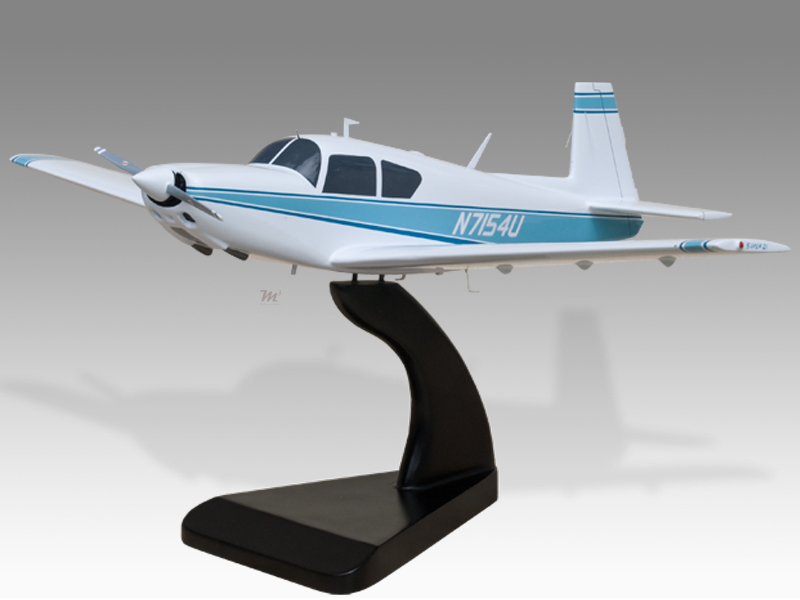
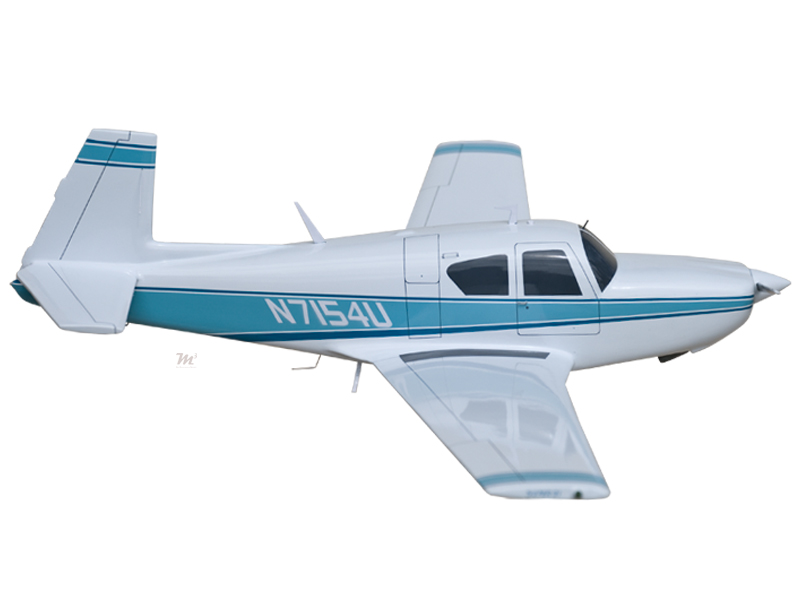
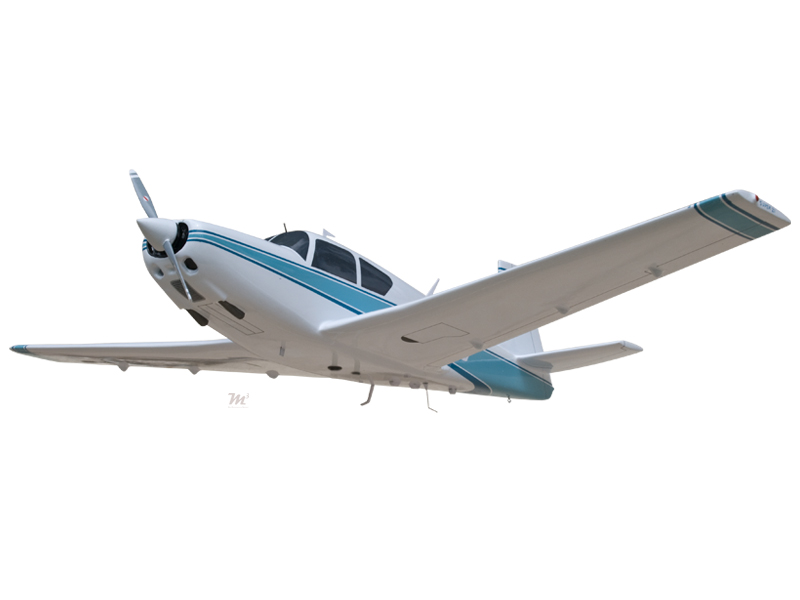
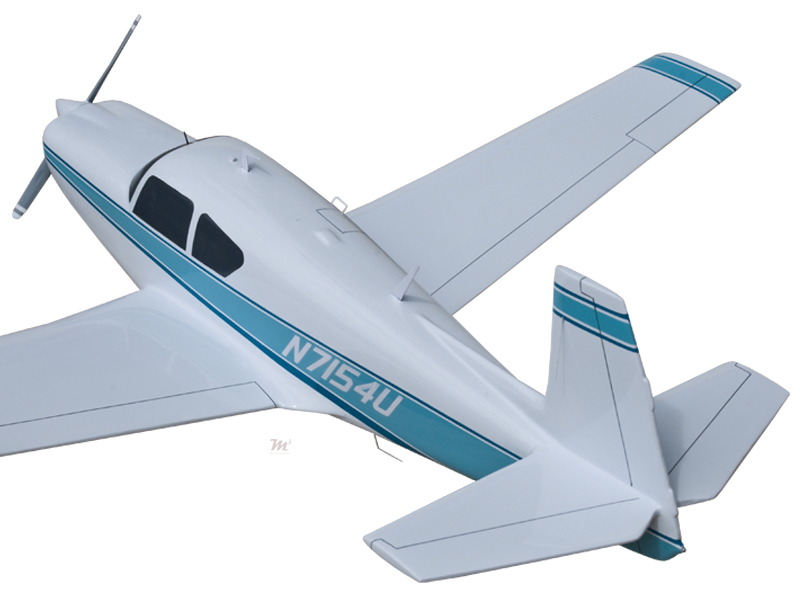

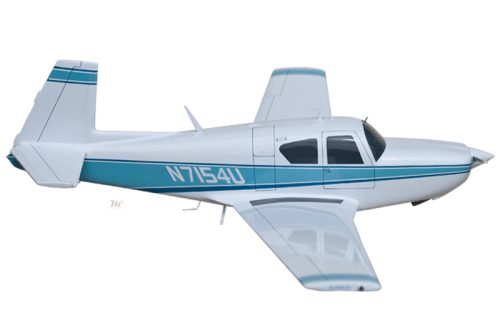
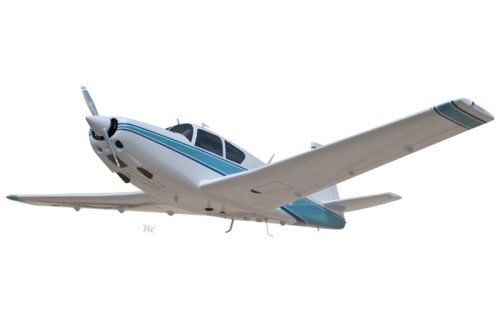


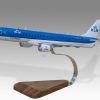

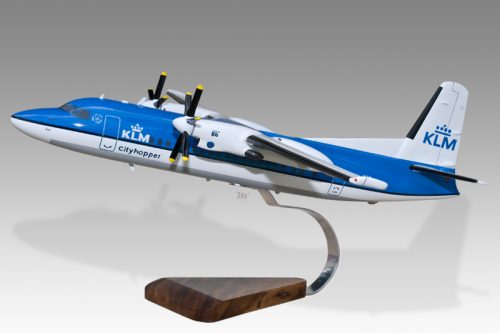
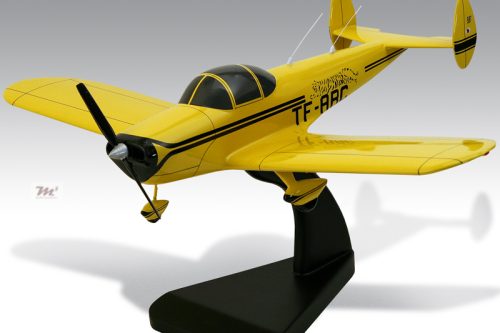
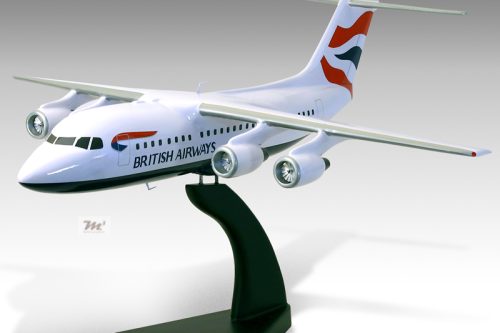
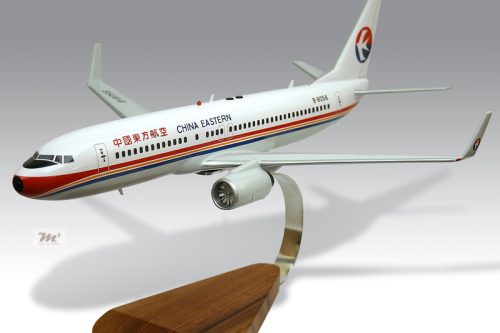

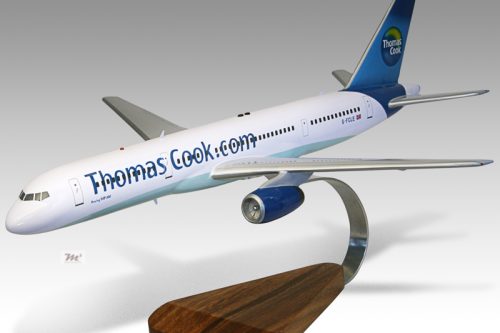

Reviews
There are no reviews yet.